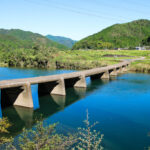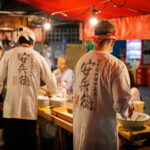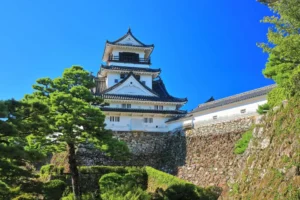
Kochi Castle, located in Kochi City on Japan’s island of Shikoku, is one of the country’s most historically significant and best-preserved feudal castles. Originally built in the early 17th century by the Yamauchi clan, it is one of only twelve original Japanese castles whose main keep (tenshu) has survived fires, wars, and natural disasters since the Edo period.
With its commanding hilltop location, elegant white plaster walls, and panoramic views over Kochi City, Kochi Castle offers an immersive experience into Japan’s samurai history, architecture, and cultural heritage.
Contents
Overview
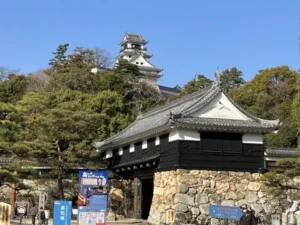
Kochi Castle occupies the strategic summit of Otakasaka Hill, rising 44 meters above sea level. Construction began in 1601 and was completed in 1611 under the rule of Yamauchi Kazutoyo, who was appointed lord of the Tosa Domain by Tokugawa Ieyasu.
The castle is unique in Japan because:
-
It retains both its original main keep and lord’s residence within the innermost citadel.
-
Visitors can climb to the top floor of the keep and explore authentic Edo-period interiors.
-
Many defensive structures remain intact, including gates, turrets, stone walls, and storehouses.
Kochi Castle is designated as an Important Cultural Property of Japan.
Key Features
1. The Main Keep (Tenshu)
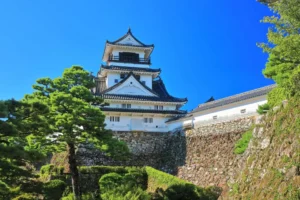
Kochi Castle’s wooden main keep stands at the highest point of the hill and offers:
-
Original Edo-period architectural design
-
Exhibits on samurai weapons, armor, and the history of the Tosa Domain
-
Narrow wooden staircases typical of defensive castle design
-
A top-floor observation deck with sweeping views of Kochi City, the mountains, and the Pacific Ocean in the distance
The keep is an excellent place to understand both the defensive and residential functions of Japanese castles.
2. The Inner Palace (Honmaru Goten)
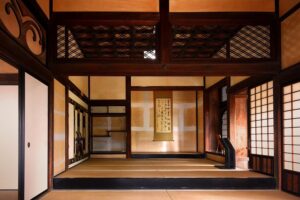
One of the castle’s most distinctive features is its surviving inner palace, located directly beneath the keep. This structure served as the administrative center and residence for the castle lord. Highlights include:
-
Tatami rooms used for official meetings
-
Original wooden construction
-
Artifacts related to the governance of the Tosa Domain
Very few Japanese castles still have their inner palace preserved, making this one of the most valuable features of Kochi Castle.
3. Stone Walls and Defensive Layout
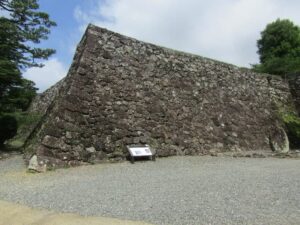
The castle’s steep stone walls, curved in the “fan slope” style, are both beautiful and highly functional. Visitors can observe:
-
Angled slopes designed to repel attackers
-
Narrow passages and gates that forced intruders into chokepoints
-
Turrets and storerooms positioned for defense
Walking around the grounds reveals how the castle's design protected the ruling samurai class.
4. Kochi Castle Park
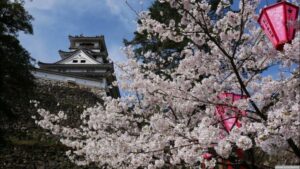
Surrounding the central keep is a spacious public park, popular for:
-
Cherry blossom viewing in spring
-
Seasonal flower displays
-
Outdoor events and local festivals
-
Relaxing walks along historical stone pathways
The park blends natural beauty with historical atmosphere, making it a favorite spot among locals and tourists.
Nearby Attractions
1. Kochi Prefectural Museum of History
Learn more about the feudal history of Tosa, samurai culture, and the political system that shaped the region.
2. Hirome Market
A lively food hall offering local specialties such as:
-
Katsuo no tataki (seared bonito)
-
Kochi-style gyoza
-
Fresh regional seafood
It is one of Kochi’s most popular dining spots.
3. Obiyamachi Shopping Arcade
A covered street filled with souvenir shops, cafes, and local craft stores, located within walking distance of the castle.
Transportation and Access
By Tram
Kochi Castle is easily accessible from Kochi Station via the local tram system.
-
Take the Ino Line or Gomen Line to Kochijo-mae Station.
-
The castle entrance is a short 5-minute walk.
By Bus
Several city bus lines stop near the castle park.
By Foot
From central Kochi City, visitors can reach the castle on foot in 10–15 minutes.
Best Time to Visit
-
Spring: The castle grounds become one of Kochi’s best cherry blossom spots.
-
Summer: Lush greenery and vibrant festival atmosphere.
-
Autumn: Colorful foliage around the stone walls and castle moat.
-
Winter: Clear skies provide excellent visibility from the keep’s observation deck.
Tips for Visitors
-
Wear comfortable shoes—the climb to the keep includes steep steps and uneven stone paths.
-
Visit early in the day or around sunset for optimal lighting and fewer crowds.
-
Photography is allowed in many areas, but some interior rooms may have restrictions.
-
Combine your visit with Hirome Market for a full cultural experience.
-
Guided tours (in Japanese) are sometimes available; audio guides in English may be offered depending on the season.
Why You Should Visit
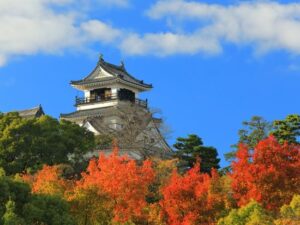
Kochi Castle offers one of Japan’s most authentic and complete samurai-era experiences. Unlike reconstructed castles, its original keep and palace provide a rare opportunity to step directly into the world of feudal Japan. Combined with scenic views, lush park grounds, and nearby cultural attractions, it is an essential destination for travelers exploring Shikoku.
Related articles
Official Website
https://kochipark.jp/kochijyo/
Great Accommodation Site
